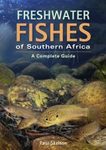Identification Key Monograph
By: Edward O Murdy(Author), Douglass F Hoese(Author)
41 pages, 3 plates with 14 colour photos; 8 b/w photos, b/w line drawings and b/w distribution maps, 7 tables
![Revision of the Gobiid Fish Genus Istigobius Revision of the Gobiid Fish Genus Istigobius]()
Click to have a closer look
About this book
Customer reviews
Related titles
About this book
The Indo-Pacific gobiid genus Istigobius Whitley is most closely related to Exyrias, but is easily separated from Exyrias by its lack of fully scaled cheeks and operculae. Istigobius comprises 10 species: the type-species I. ornatus (Rüppell), distributed from the Red Sea to Fiji; I. perspicillatus (Herre), known only from India, Thailand, and Australia; I. hoshinonis (Tanaka), known from southern Japan and southern Korea; I. rigilius (Herre), which ranges from the Philippines south to the Great Barrier Reef and east to Kiribati; I. hoesei Murdy and McEachran, known only from the vicinity of Sydney in New South Wales, Australia; I. campbelli (Jordan and Snyder), known only from Japan, Hong Kong, and Taiwan; I. nigroocellatus (Günther), which ranges from the Philippines to Australia; I. goldmanni (Bleeker), which ranges from Taiwan to Australia; I. spence (Smith), which ranges from Mozambique to Micronesia; and I. decoratus (Herre), distributed widely from the Red Sea to American Samoa.
I. ornatus is distinctive in possessing free upper pectoral rays. I. perspicillatus has black lines along the anterior rims of the eyes which connect across the interorbital region, 1 or 2 rows of scales on the operculum, and 13 or more predorsal scales. I. hoshinonis is the only other species with 13 or more predorsal scales but lacks scales on the operculum. I. rigilius is extremely pale, the only species lacking black markings, and typically possesses 13 branched caudal rays. I. hoesei has black lateral portions to its upper jaws. I . campbelli has a predorsal scale count of 11-12. I. nigroocellatus possesses a large black spot basally on interspinous membranes of dorsal spines V-VI, and has 3 spots on the caudal base forming a "V". I. goldmanni has as many as 30 dark spots on the nape. I. spence is the smallest species of the genus (maximum size not exceeding 50 mm standard length), and has prepelvic scales reaching to, or almost to a point beneath eye. I. decoratus is the largest species (maximum size exceeding 75 mm standard length), and typically possesses prominent dark spots in the interspinous membranes of dorsal spines I-III.
Species of Istigobius are predominantly sand-dwelling, many being associated with coral reefs. Evaluation of 19 meristic and morphometric characters were made using univariate and multivariate analyses, with limited success in determining significant differences. The character of greatest importance in separating species proved to be color pattern. Each species is figured, as are important anatomical features. Sexual dimorphic aspects are described in detail. Summaries of ecological and zoogeographic information for the genus are given.
Customer Reviews
Identification Key Monograph
By: Edward O Murdy(Author), Douglass F Hoese(Author)
41 pages, 3 plates with 14 colour photos; 8 b/w photos, b/w line drawings and b/w distribution maps, 7 tables






































